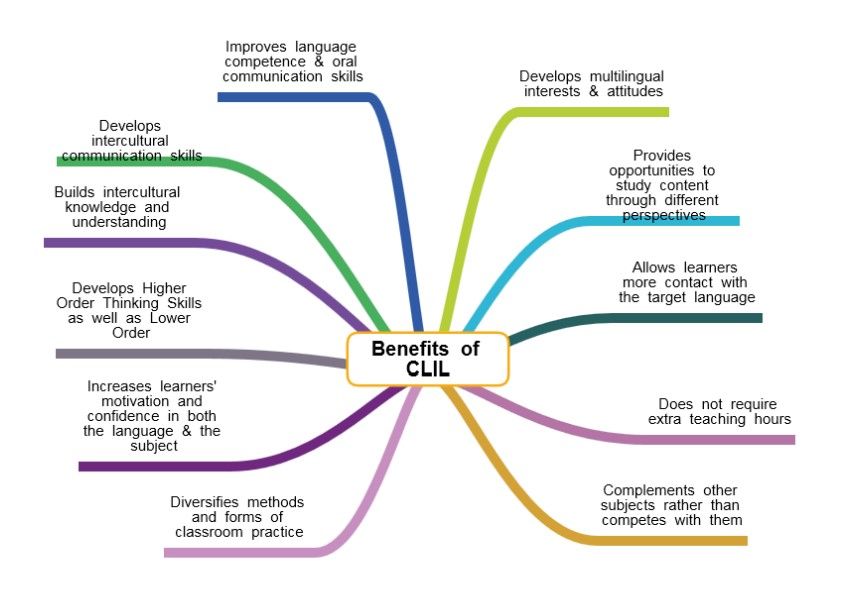
CLIL aims to simultaneously develop proficiency in both the content area and the target language. This methodology is used widely in bilingual and multilingual education settings.
Key Features of CLIL
Dual-Focused Learning: CLIL emphasizes both content learning (e.g., math, science, history) and language learning, providing an integrated approach to education.
Language as a Medium: The target language is used as the medium of instruction, allowing students to acquire language skills in a natural context.
Authentic Materials: CLIL often uses real-world materials, such as articles, videos, and presentations, to engage students and provide contextually rich learning experiences.
Cultural Awareness: The approach often includes cultural elements of the language being taught, fostering intercultural understanding and communication skills.
Cognitive Skills Development: CLIL encourages the development of cognitive skills, such as critical thinking, problem-solving, and creativity, through complex content tasks.
Benefits of CLIL
Language Proficiency: Students improve their language skills by using the target language in a meaningful context.
Content Knowledge: Learners gain a deeper understanding of the subject matter, as they engage with it from different linguistic perspectives.
Motivation: The integrated approach can increase motivation and engagement, as students see the practical application of language learning.
Cognitive Advantages: CLIL can enhance cognitive abilities, such as memory and concentration, due to the mental demands of processing information in a non-native language.
Challenges of CLIL
Teacher Preparation: Educators need to be proficient in the target language and skilled in integrating language and content teaching.
Resource Availability: There can be a lack of suitable materials that meet both language and content objectives.
Assessment: Evaluating both content and language proficiency can be complex and requires careful planning.
Implementation Strategies
Collaborative Planning: Teachers of different subjects can work together to create integrated lesson plans that align language and content objectives.
Scaffolding: Provide support structures, such as vocabulary lists, visual aids, and language frames, to help students navigate the language and content.
Interactive Activities: Use group work, discussions, and projects to encourage active learning and language use.
Assessment: Develop assessments that evaluate both content knowledge and language skills, using rubrics that include language-specific criteria.



